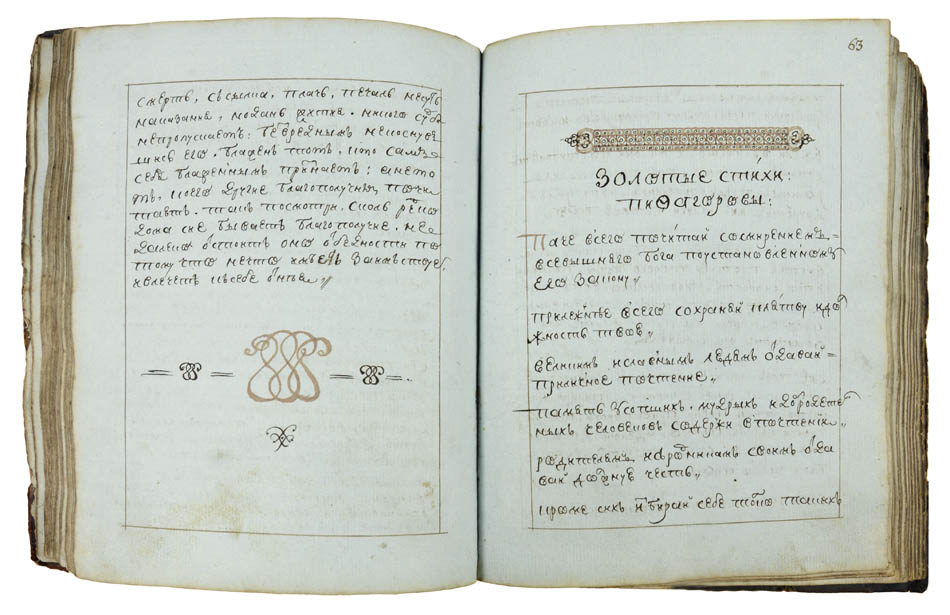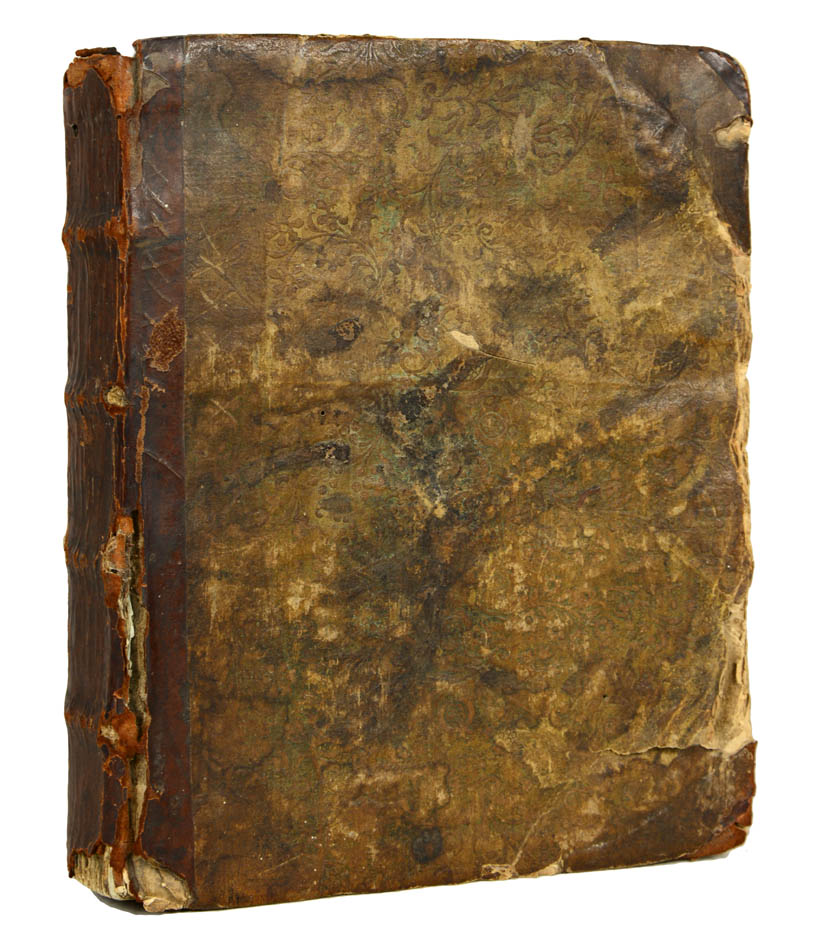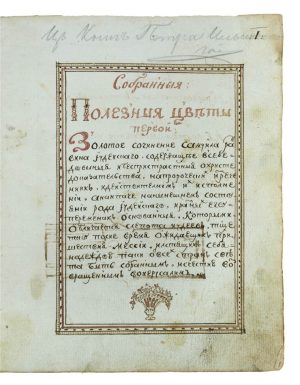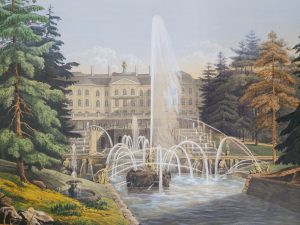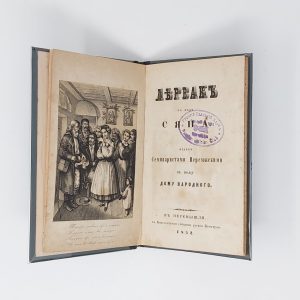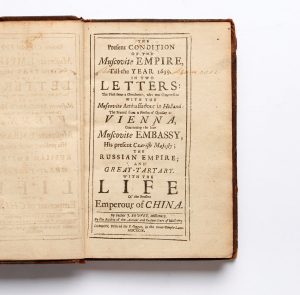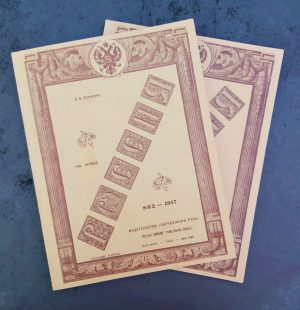Our Notes & References
Very rare collection of celebrated theological and philosophical texts, including some forbidden by Catherine the Great’s government in the 1780s. Very well preserved in its contemporary binding.
It also includes a poem authored most likely by the compiler of the manuscript and dedicated to the opening of the bronze horseman, the celebrated monument to Peter the Great inaugurated by Catherine II in St. Petersburg.
Content:
1) Collection of the Useful Flowers, containing 4 chapters:
– First: Golden Book of Rabbi Samuel, containing satisfactory and unbiased proofs of the existence of Christ, based on prophetic sayings and their actual fulfilment, but especially on the present state of the Jewish race, its various changes revealing the blindness of the Jews, who vainly at this time wait for the coming of the Messiah and flatter themselves with the hope of being gathered again from all over the world to return to Jerusalem (27 parts);
– Second: Moral instructions to the Christians;
– Third: moral medicines for different occasions;
– Fourth: Golden verses of Pythagoras.
2) The memorable: a list of various events and dates from the birth of Christ to the birth of Peter I in 7180 [1682].
3) Fortune telling by philosophers.
4) Ode on the occasion of the inauguration of the monument to Peter I.
5) Lives of the Saints.
The first work in the manuscript is especially interesting and controversial: this “Golden book” was apparently written by a Moroccan rabbi and translated by a priest named Varlaam. It contains criticism of Judaism from the Christian point of view presenting an unfortunate condition of the Jews as a state of exile for their rejection of Messiah. This work was first published in Russian in 1778. Shortly before the second issue, by Bogdanovich in 1782, the work was illegally included in a publication called “Collection of Useful Flowers” by Gippius, who didn’t have the rights for the publication of the translation. By 1787, any distribution of the “Golden Book” was prohibited by the government, due to the controversial theological judgments it contains.
The “Golden verses of Pythagoras” had a similar fate. The work was first published by Novikov in 1766 as “The Spirit of Pythagoras”. As it enjoyed some success, a second edition came to light in 1786. But in the view of toughened censorship and persecution of Nikolay Novikov by the authorities, the book was forbidden and its 430 copies were confiscated.
The fourth part of the manuscript contains an ode entitled “Composition…on the Erection of a Monument in Saint Petersburg in August…day 1782” and signed by Kozma Afanasyevich Mikhailov, former registrar to the court. The poem, apparently unpublished, was written on the occasion of the inauguration of the monument to Peter I, now known as the Bronze Horseman, and is dated August 1782. The author of the ode, who also previously served as a protocol officer for the Yamskaya Chancellery, is mentioned as a co-author of several road calendars in the SK (299, 300, volume IV). Judging by the introduction, the ode was meant to be read in a circle of high officials on a solemn occasion. In the margin he has a postscript: “Given in St. Petersburg to the collegiate assessor Medvedev on the 2nd of June 1783”.
Numerous inscriptions on the pages of the manuscript allow us to identify its previous owners, as well as some of the authors of the texts: the “Collection of Useful Flowers” was apparently rewritten in the 1780s by Grigory Gavrilovich Dobryshin. The book was given to the citizen Kiselev, as indicated in the inscription in handwriting different from the main text.
The present manuscript reveals a very interesting collection of texts of religious and philosophical content, including banned and confiscated works, and perfectly illustrates the interests and sentiments of the Russian bourgeoisie at the turn of the century.
_________________________________________________________________
ПРЕКРАСНО СОХРАНИВШАЯСЯ РУКОПИСЬ, ПРЕДСТАВЛЯЮЩАЯ СОБОЙ ИНТЕРЕСНУЮ КОЛЛЕКЦИЮ ИЗВЕСТНЫХ БОГОСЛОВСКИХ И ФИЛОСОВСКИХ ТЕКСТОВ, КОТОРЫЕ В ТОМ ЧИСЛЕ ВКЛЮЧАЮТ РАБОТЫ, ЗАПРЕЩЕННЫЕ ПРАВИТЕЛЬСТВОМ ЕКАТЕРИНЫ II В РЕАКЦИОННЫЕ 1780-Е ГОДЫ.
Также содержит вероятно неопубликованную авторскую оду на открытие памятника Петру I.
Содержание:
1) Собранныя полезныя цветы, состоящие из четырех глав (лл. 1 – 73):
– Первой, Золотое сочинение Самуила раввина иудейского, содержащее в себе довольные и беспристрастные о Христе доказательства, на пророческих изречениях и действительном их исполнении, а наипаче на нынешнем состоянии рода иудейского, разных его переменах основанные, которыми обличается слепота иудеев, тщетно по сие время ожидающих пришествия мессии, и льстящих себя надеждою паки от всех стран света быть собранным, и с возвращенными в Иерусалим (27 частей);
– Второй, нравоучительное христианам наставление;
– Третий, лекарства моральные на разные случайности;
– Четвертой, золотые стихи пифагоровы, и некоторые его письма.
2) Достопамятное : перечень различных событий и дат от рождества Христова до рождения царя Петра Алексеевича в 7180 году [1682]. (лл. 73 – 76)
3) Гадание философов. (лл. 76 – 78)
4) « Сочинение..на возведение монумента в Санкт-Петербурге августа..дня 1782 году » (об открытии памятника Петру I) (лл. 81 – 94).
5) Четьи-минеи: некоторые жизнеописания преподобных русской церкви. (лл. 97 – 149)
Особый интерес представляет текст первой части манускрипта озаглавленный «Собранные полезные цветы». Сборник под таким же названием был впервые опубликован издателем Гиппиусом в Московской Сенатской типографии в 1782 году, что позволяет предположить составление даного рукописного текста не ранее этого года. Первая часть сборника, «Золотое сочинение» Самуила Марокканского в переводе иеромонаха Варлаама, является, пожалуй, самой противоречивой, представляя острую критику иудаизма и доказательства в пользу правдивости сведений о жизни Христа. Издатель Гиппиус не заботился о получении издательских прав и использовал текст «Золотого сочинения» в своем сборнике незаконно, позаимствовав его из оригинальной публикации его отдельной книгой в 1778 году (тип. Сухопутного шляхетного кадетского корпуса). Противоречивый характер текста Самуила подтверждается фактом запрещения и изъятия из продажи второго отдельного издания «Золотого сочинения», опубликованого Богдановичем в том же году, что и сборник «Полезные цветы» Гиппиуса.
Указ о запрещении также постиг отдельную публикацию «Золотых стихов Пифагоровых и некоторых его писем», текст которой включен в четвертую часть «Полезных цветов». «Золотые стихи» были изданы отдельной книгой в 1766 году Новиковым под заглавием «Дух Пифагороф». Работа имела большой успех и в 1786 году вышло второе издание, но ввиду ужесточившейся цензуры и преследования властями самого издателя Николая Новикова, книга была запрещена и 430 экзэмпляров было конфисковано в московских книготорговых лавках.
Четвертая часть рукописи заключает в себе оду, озаглавленную «Сочинение..на возведение монумента в Санкт-Петербурге августа..дня 1782 году» и подписанную именем Козьмы Афанасьевича Михайлова, бывшего придворного реестратора. Поэма, по-видимому так и неопубликованная, написана по поводу торжественного открытия памятника Петру I, ныне известного как «Медный Всадник», и датирована августом 1782 года. Автор оды, служащий также в свое время протоколистом Ямской канцелярии, упоминается как соавтор нескольких дорожных календарей в Сводном Каталоге (299, 300, том IV). Судя по вступлению, ода предназначалась для прочтения в кругу высоких особ по торжественному поводу. На полях имеется приписка: “поднесено в Санкт-Петербурге коллежскому асессору Медведеву июня 2 дня 1783”.
Многочисленные владельческие надписи на страницах рукописи позволяют установить ее предыдущих владельцев, а также некоторых авторов текстов. Таким образом, текст «Полезных цветов» был по-видимому переписан в 1780-х годах неким Григориев Гавриловичем Добрышиным. Поднее книга была поднесена мещанину Киселеву, о чем свидетельствует надпись отличным от основного текста почерком: «Сия книга написанная Григорием Гавриловичем Добрышиным действительно его рукой и предоставлена…. мещанину Ивану Федорову Киселеву в 1815 году».
Представленная рукописная книга является очень интересным собранием текстов религиозного и философского содержания, включая запрещенные и конфискованные работы, и прекрасно иллюстрирует интересы и настроения российского мещанства на повороте веков.
Provenance
Grigorii Gavrilovich Dobryshin (Inscription in ink on leaf 71, inscription on verso of leaf 95 and lower fly leaf; initialled on verso of leaf 148); Ivan Fedorov Kiselev (inscriptions in pencil to endpapers and to recto of leaf 79); Petr Ilyinskii (inscription in pencil to first page, poem in his hand to recto of upper fly leaf).
Bibliography
Cf. for printed editions Sm-Sok. Biblioteka 462, 2066, 6276 and 6648.



